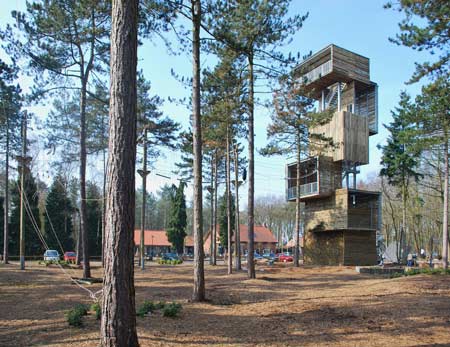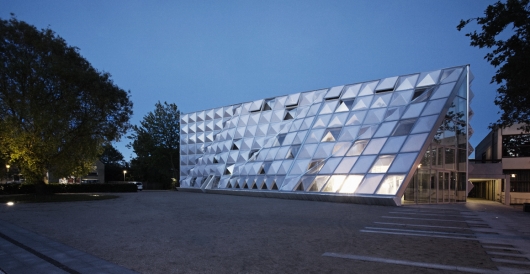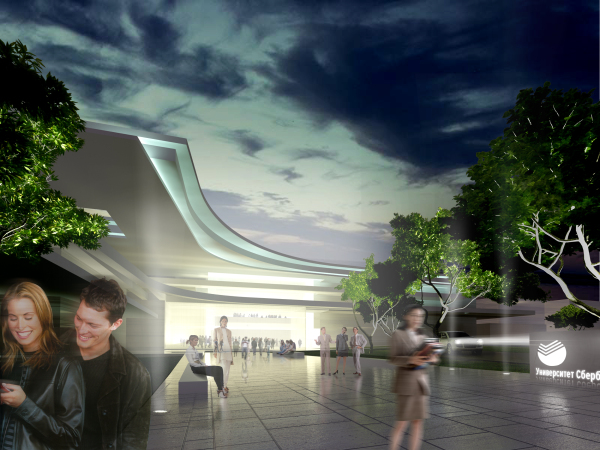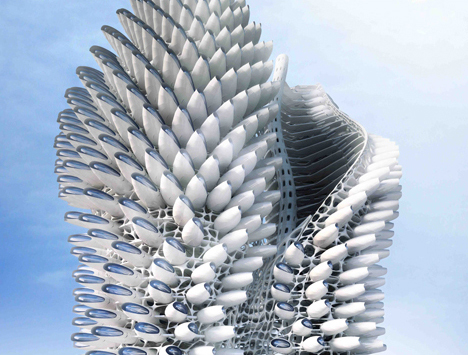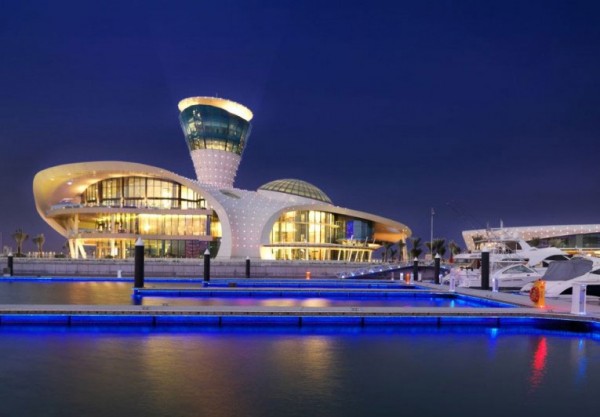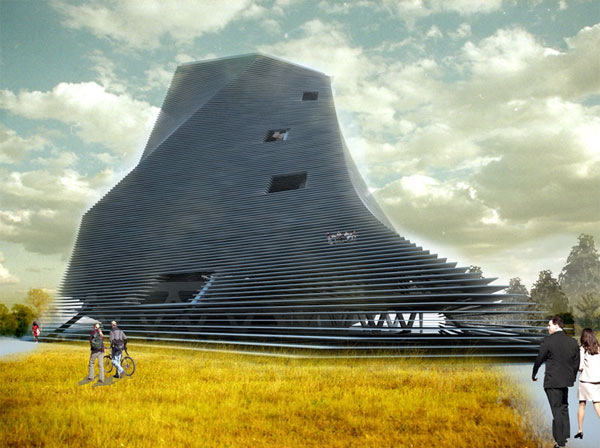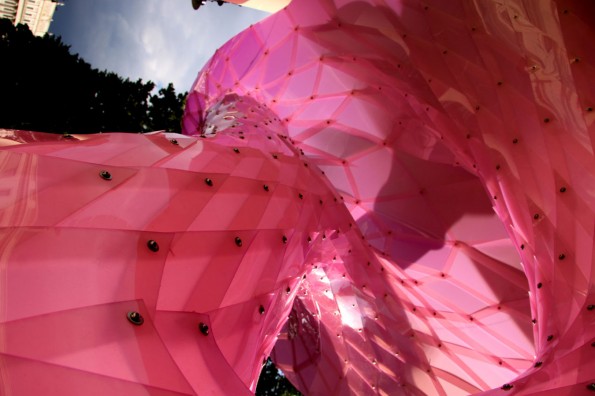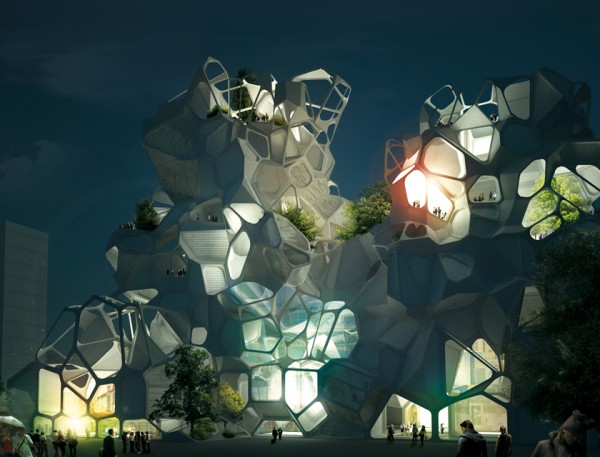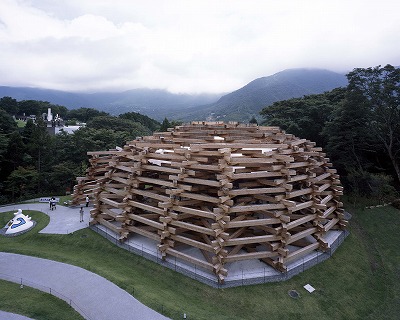Architectural studio SOMA has finished the design of the thematic pavilion for the 2012 Yeosu World Expo. The project was selected in late 2009 and is expected to begin construction during the next couple of months.
As a major and permanent facility the thematic pavilion embodies the expo’s theme ‘the living ocean and coast’ in manifold ways. The ocean is experienced in two ways, as an endless surface and in an immersed perspective as depth. The plain duality of the ocean motivates the building’s spatial and organisational concept. Continuous surfaces twist from vertical to horizontal orientation and define all significant interior spaces. The vertical cones induce the visitor to immerse into the thematic exhibition. They evolve into horizontal levels that cover the foyer and become a flexible stage for the best practice area. Continuous transitions between contrasting experiences also form the outer appearance of the pavilion. Towards the sea the conglomeration of solid vertical cones define a new meandering coast line, a soft edge that is in constant negotiation between water and land. Opposite side the pavilion develops out of the ground into an artificial roof landscape with gardens and scenic paths. The topographic lines of the roof turn into lamellas of the kinetic media facade that faces the expo’s entrance and the ‘digital gallery’. Read the rest of this entry »


